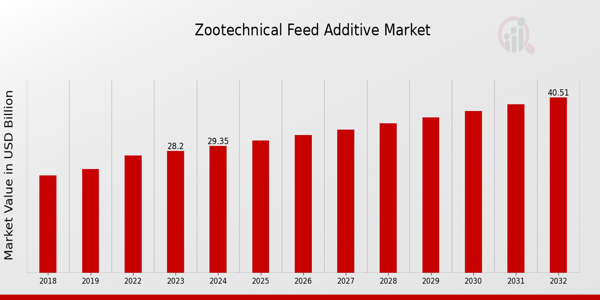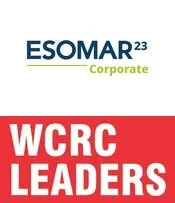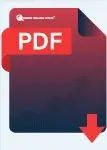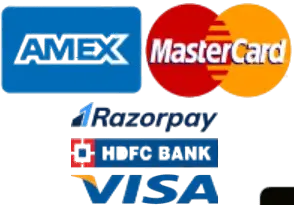Global Zootechnical Feed Additive Market Overview
Zootechnical Feed Additive Market Size was estimated at 27.08 (USD Billion) in 2022. The Zootechnical Feed Additive Industry is expected to grow from 28.2 (USD Billion) in 2023 to 40.5 (USD Billion) by 2032. The Zootechnical Feed Additive Market CAGR (growth rate) is expected to be around 4.11% during the forecast period (2024 - 2032).

Source: Primary Research, Secondary Research, MRFR Database and Analyst Review
Key Zootechnical Feed Additive Market Trends Highlighted
The Zootechnical Feed Additive Market is witnessing substantial growth on account of rising demand for better quality livestock products and improving consciousness regarding the nutrition and health of livestock. The trend of consumer awareness of health issues leads to higher demands for better quality meat, milk, dairy products and eggs. This has forced farmers and producers to consider the use of feed additives to improve production efficiency and the health maintenance of livestock as well. Furthermore, the stringent measures regarding the use of antibiotics in livestock undertakings also encourage the use of alternative additives that serve the same needs but maintain food safety. There are a number of opportunities yet to be tapped in this developing market.Innovations in feed technology and the development of natural and organic additives are gaining traction. As the trend towards sustainability continues, producers are looking for solutions that reduce the environmental impact of livestock farming.
The demand for products that promote animal welfare and reduce reliance on synthetic additives presents a chance for companies to differentiate themselves. Furthermore, growing markets in developing countries offer vast potential for expansion as they modernize their livestock practices to meet global standards. Recent trends indicate a shift towards precision feeding, where nutritional inputs are tailored to the specific needs of individual animals.This approach not only enhances efficiency but also improves the health and productivity of livestock. There is also a growing interest in probiotics and prebiotics as effective alternatives to traditional feed additives. As more research supports the benefits of such products, their adoption is likely to rise. The shift towards more responsible consumer behavior and the growing focus on sustainable practices in agriculture highlights the dynamic nature of the zootechnical feed additive market. Companies that stay ahead of these trends by innovating and adapting to changing consumer preferences will be better positioned for success.
Zootechnical Feed Additive Market Drivers
Increasing Demand for Animal Protein
The rising global population and the subsequent increase in demand for animal-derived food products are driving the Zootechnical Feed Additive Market Industry. As consumers become more health-conscious, there is a significant shift towards higher protein diets, leading to a surge in meat, dairy, and egg consumption. This trend places tremendous pressure on livestock producers to enhance the efficiency of their operations, which includes optimizing feed utilization and improving animal health.As a result, farmers and feed producers are increasingly incorporating zootechnical feed additives into their feed formulations to boost production levels and enhance the overall health of livestock. Additionally, as animal protein becomes more integral to diets worldwide, the need for sustainable and efficient production practices becomes even more pronounced. Feed additives contribute not only to growth promotion but also to improving feed conversion ratios.Moreover, with the rise of the aquaculture sector, given its rapid growth, the focus on suitable and effective feed additives tailored specifically for aquatic species adds another layer of market expansion. As regulations continue to evolve around the quality and safety of animal products, the Zootechnical Feed Additive Market will witness a shift towards using more innovative and functional feed additives, further supporting the market's growth trajectory.
Focus on Animal Health and Welfare
The growing emphasis on the health and welfare of livestock is a significant driver in the Zootechnical Feed Additive Market Industry. Consumers are now more aware than ever of the origins of their food, leading to increased scrutiny of farming practices. Healthy animals not only produce higher-quality food products but also lead to reduced costs associated with veterinary care and increases in productivity. As such, farmers are motivated to use feed additives that support livestock health, disease prevention, and overall well-being.These additives can improve gut health, enhance immune responses, and reduce the prevalence of diseases, directly impacting livestock productivity. The market is now seeing a surge in demand for natural and organic feed additives as consumers seek products that are perceived as safer and more ethical, further driving innovation and demand in the field.
Rising Awareness of Feed Efficiency
As feed constitutes a substantial portion of the total cost of livestock production, the pursuit of feed efficiency emerges as a critical market driver in the Zootechnical Feed Additive Market Industry. Farmers and producers are increasingly focused on optimizing feed formulations to ensure maximum nutrient absorption and minimal wastage. Feed additives can play a crucial role in enhancing feed efficiency by improving digestion and nutrient utilization.This not only leads to cost savings but also supports environmental sustainability by potentially reducing waste. As the global market becomes more competitive, there is a concerted effort among producers to leverage zotechnical feed additives that can provide a competitive advantage through improved feed formulation. Ultimately, this growing awareness around feed efficiency is poised to support the overall growth of the market.
Zootechnical Feed Additive Market Segment Insights
Zootechnical Feed Additive Market Additive Type Insights
The Zootechnical Feed Additive Market, under the Additive Type segment, exemplifies significant growth and diversification. By 2023, the market is valued at 28.2 USD Billion, reflecting a robust adherence to feed efficiency and animal health improvement. This segment includes pivotal categories such as Nutritional Additives, Zoonotic Disease Control Additives, Growth Promoters, and Flavoring Agents, each contributing uniquely to the holistic development of livestock. Nutritional Additives dominate this space, exhibiting a valuation of 10.5 USD Billion in 2023, and are anticipated to rise to 16.0 USD Billion by 2032.Their significance lies in their ability to enhance feed quality and nutritional content, ensuring optimal growth and productivity in livestock. Following closely, Zoonotic Disease Control Additives hold a substantial market value of 7.2 USD Billion in 2023, projected to increase to 10.6 USD Billion by 2032, underscoring their critical role in safeguarding animal health and preventing disease transmission to humans, resonating with heightened global health awareness. Growth Promoters are also integral, with a valuation of 6.0 USD Billion in 2023, expected to escalate to 8.5 USD Billion by the end of the forecast period.These additives are essential for enhancing feed conversion ratios, thereby driving overall efficiency and profitability within the animal husbandry sector. Flavoring Agents currently stand at 4.5 USD Billion and are projected to reach 5.4 USD Billion by 2032, playing a vital role in enhancing palatability and ensuring that animals consume optimal quantities of feed. The variance in market valuation across these categories illustrates the diverse strategies and focus areas within the Zootechnical Feed Additive Market, reflecting ongoing trends toward health optimization, efficiency improvements, and increased animal welfare.Moreover, consumer preferences for higher-quality and sustainably sourced animal products drive growth across all segments, while regulatory challenges surrounding feed additives present opportunities for innovation and product differentiation in this dynamic market landscape.

Source: Primary Research, Secondary Research, MRFR Database and Analyst Review
Zootechnical Feed Additive Market Animal Type Insights
The Animal Type segment of the Zootechnical Feed Additive Market is a vital contributor to the industry's overall growth, with a projected market value of 28.2 USD Billion in 2023, reflecting a strong demand across various species. Livestock and Poultry are significant components of this segment, driven by the increasing need for protein in human diets, boosting feed additive consumption. Aquaculture is gaining traction due to rising seafood consumption and a shift towards sustainable practices in fish farming, making it an area of focus with substantial growth potential.Meanwhile, the Pets category is becoming increasingly important as pet ownership continues to rise globally, leading to greater demand for specialized feed additives designed for health and nutrition. The Zootechnical Feed Additive Market statistics highlight the diverse needs of different animal types, reflecting a robust and competitive environment. This segmentation fosters opportunities for innovation in feed formulations, addressing specific nutritional requirements and thereby enhancing animal health and productivity while responding to consumer trends toward more sustainable and ethically sourced food products.The demand for high-quality feed additives is expected to shape the future of the market, creating avenues for growth and advancement in the industry.
Zootechnical Feed Additive Market Formulation Type Insights
The Zootechnical Feed Additive Market is currently valued at 28.2 USD Billion, and each formulation type within this market plays a crucial role in enhancing animal health and productivity. The segment comprises various formats, including Powder, Liquid, and Granules, each catering to different feeding practices and livestock requirements. Among these formulations, Powder is notably recognized for its versatility and ease of use, proving to be a preferred choice for many producers. Liquid formulations, on the other hand, are gaining popularity due to their ability to ensure uniform distribution and ease of incorporation in feed mixes, contributing significantly to the market growth.Granules dominate a portion of the market thanks to their stability and effectiveness in maintaining nutrient integrity over time. The demand across these formulation types is propelled by trends such as the rising focus on animal nutrition, regulatory improvements in livestock management, and increasing awareness about sustainable farming practices. However, challenges such as fluctuating raw material prices and stringent regulatory frameworks might impact market dynamics. The anticipated shift towards more innovative formulations, coupled with growing livestock production, presents opportunities for expansion in the Zootechnical Feed Additive Market.Overall, the market exhibits a diverse landscape, with formulation types responding adaptively to evolving industry needs and trends.
Zootechnical Feed Additive Market Distribution Channel Insights
The Zootechnical Feed Additive Market has shown substantial growth in recent years, with the market valued at 28.2 USD Billion in 2023. The distribution channel plays a vital role in the accessibility and penetration of these feed additives, facilitating a seamless connection between producers and end-users. This segment encompasses various modes of distribution, including online, offline, and direct sales. Online distribution has become increasingly significant, allowing for broader market reach and convenience for consumers. Offline channels remain essential, particularly in regions with well-established agricultural practices and traditional purchasing behaviors.Direct sales enable manufacturers to establish direct relationships with customers, thereby enhancing customer loyalty and feedback. The market dynamics indicate a strong preference for diversification across these channels, as they collectively contribute to the overall efficiency and effectiveness of product delivery. Furthermore, the changing consumer behavior toward e-commerce and digital platforms suggests a notable shift toward online sales, driving innovation in the Zootechnical Feed Additive Market. The interplay among these various distribution channels is crucial for understanding market segmentation and its implications for revenue generation and strategic planning in the industry.
Zootechnical Feed Additive Market Regional Insights
The Zootechnical Feed Additive Market showcases a diverse regional landscape, with North America commanding a significant share valued at 10.5 USD Billion in 2023, projected to grow to 15.0 USD Billion by 2032, making it a dominant player in the industry. Europe follows closely, with a valuation of 8.0 USD Billion in 2023, expanding to 11.5 USD Billion by 2032, indicating its importance in the market growth dynamics through advanced agricultural practices. The APAC region, valued at 6.5 USD Billion in 2023 and expected to reach 9.0 USD Billion by 2032, is emerging as a significant area for growth due to increasing livestock farming and demand for high-quality feed.South America and MEA represent smaller yet growing segments, with valuations of 1.5 USD Billion and 1.7 USD Billion in 2023, respectively, aiming for growth to 2.5 USD Billion by 2032. The growth drivers across all regions include rising meat consumption, increased livestock production, and the need for sustainable feed solutions, presenting opportunities for innovations within the Zootechnical Feed Additive Market. However, challenges like regulatory hurdles and fluctuating raw material prices may impact market potential. Overall, the Zootechnical Feed Additive Market data indicates a trend toward enhanced animal performance positions the industry for ongoing growth across all noted regions.

Source: Primary Research, Secondary Research, MRFR Database and Analyst Review
Zootechnical Feed Additive Market Key Players and Competitive Insights
The Zootechnical Feed Additive Market has been witnessing significant growth driven by increasing demand for high-quality livestock products, shifting consumer preferences toward sustainable practices, and the need for enhanced animal health and productivity. This market encompasses various products designed to improve the efficiency and quality of animal feed while promoting animal well-being. Competitive insights in this sector highlight the efforts of key players to innovate and expand their product offerings through technological advancements and strategic partnerships. As companies vie for market share, the competitive landscape is marked by the introduction of new formulations, a focus on natural and organic additives, and a commitment to sustainability to meet regulatory standards and consumer demand.Kemin Industries has established a robust presence in the Zootechnical Feed Additive Market, leveraging its extensive research and development capabilities to create innovative feed solutions that enhance animal performance and health.
The company's strong emphasis on sustainability and nutrition positions it advantageously, allowing it to cater to a wide range of livestock needs. Kemin Industries differentiates itself through its commitment to high-quality ingredients and formulations that are backed by scientific research. Furthermore, the company's global reach, combined with its local expertise, enables it to effectively serve the diverse requirements of different markets and strengthen its competitive position.Alltech also plays a significant role in the Zootechnical Feed Additive Market, focusing on providing advanced nutritional solutions that support animal health and productivity. The company's dedication to innovation is evident in its range of specialized feed additives designed to optimize nutrition and maximize feed efficiency. Alltech's strengths lie in its extensive experience in animal nutrition and its commitment to research and development, which continuously drive the introduction of new products to meet evolving market demands. Additionally, Alltech's focus on environmentally friendly and sustainable practices not only enhances its market attractiveness but also aligns with the increasing consumer preference for eco-conscious livestock production.
Key Companies in the Zootechnical Feed Additive Market Include
- Kemin Industries
- Alltech
- Cargill
- De Heus
- Evonik Industries
- ADM
- Nutreco
- Hansen
- BASF
- Novus International
- Trouw Nutrition
- InVivo
- Zagro
- Lallemand Animal Nutrition
- Phibro Animal Health
Zootechnical Feed Additive Market Industry Developments
Recent developments in the Zootechnical Feed Additive Market include significant growth in demand as livestock producers seek to enhance animal health and productivity. Kemin Industries has launched several innovative products, focusing on natural ingredients to meet the rising consumer preference for sustainable agri-food systems. Alltech has made strides with its enzyme-based feed additives, aiming to improve feed conversion ratios. Meanwhile, Cargill continues to expand its offerings through strategic partnerships and investments in research and development. In terms of mergers and acquisitions, Evonik Industries has actively pursued collaborations to expand its portfolio, while ADM has announced plans to acquire additional companies in this sector to bolster its market presence. Nutreco is also reported to be enhancing its capabilities through strategic acquisitions that focus on technological advancements in feed additives. Current market valuations indicate a positive trajectory with increasing investments, which are enhancing the competitive landscape among key players like Chr. Hansen, BASF, and Novus International. This growth reflects a broader industry trend aiming to meet evolving consumer demands for high-quality animal products while addressing sustainability challenges across global supply chains.
Zootechnical Feed Additive Market Segmentation Insights
-
Zootechnical Feed Additive Market Additive Type Outlook
- Nutritional Additives
- Zoonotic Disease Control Additives
- Growth Promoters
- Flavoring Agents
-
Zootechnical Feed Additive Market Animal Type Outlook
- Livestock
- Poultry
- Aquaculture
- Pets
-
Zootechnical Feed Additive Market Formulation Type Outlook
-
Zootechnical Feed Additive Market Distribution Channel Outlook
- Online
- Offline
- Direct Sales
-
Zootechnical Feed Additive Market Regional Outlook
-
North America
-
Europe
-
South America
-
Asia Pacific
-
Middle East and Africa
| Report Attribute/Metric |
Details |
| Market Size 2022 |
27.08 (USD Billion) |
| Market Size 2023 |
28.2 (USD Billion) |
| Market Size 2032 |
40.5 (USD Billion) |
| Compound Annual Growth Rate (CAGR) |
4.11% (2024 - 2032) |
| Report Coverage |
Revenue Forecast, Competitive Landscape, Growth Factors, and Trends |
| Base Year |
2023 |
| Market Forecast Period |
2024 - 2032 |
| Historical Data |
2019 - 2023 |
| Market Forecast Units |
USD Billion |
| Key Companies Profiled |
Kemin Industries, Alltech, Cargill, De Heus, Evonik Industries, ADM, Nutreco, Chr. Hansen, BASF, Novus International, Trouw Nutrition, InVivo, Zagro, Lallemand Animal Nutrition, Phibro Animal Health |
| Segments Covered |
Additive Type, Animal Type, Formulation Type, Distribution Channel, Regional |
| Key Market Opportunities |
Increased demand for sustainable feed, Growing awareness of animal health, Technological advancements in feed additives, Expansion in emerging markets, Rising consumer preference for organic products |
| Key Market Dynamics |
Increasing livestock production demand, Rising focus on animal health, Stringent regulatory frameworks, Advancements in feed technology, Growing awareness of feed efficiency |
| Countries Covered |
North America, Europe, APAC, South America, MEA |
Frequently Asked Questions (FAQ) :
The Zootechnical Feed Additive Market is expected to reach a value of 40.5 USD Billion by 2032.
The expected CAGR for the Zootechnical Feed Additive Market from 2024 to 2032 is 4.11%.
North America holds the largest market share in the Zootechnical Feed Additive Market, valued at 10.5 USD Billion in 2023.
The Nutritional Additives segment is projected to reach a market value of 16.0 USD Billion by 2032.
Key players in the market include Kemin Industries, Alltech, Cargill, De Heus, and Evonik Industries.
The Zoonotic Disease Control Additives segment is valued at 7.2 USD Billion in 2023.
The APAC region is expected to grow from 6.5 USD Billion in 2023 to 9.0 USD Billion in 2032.
The anticipated market value for Flavoring Agents by 2032 is 5.4 USD Billion.
Challenges include regulatory hurdles and the need for innovation in product development.
Growth Promoters are expected to show notable growth, projected to reach 8.5 USD Billion by 2032.
























